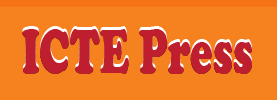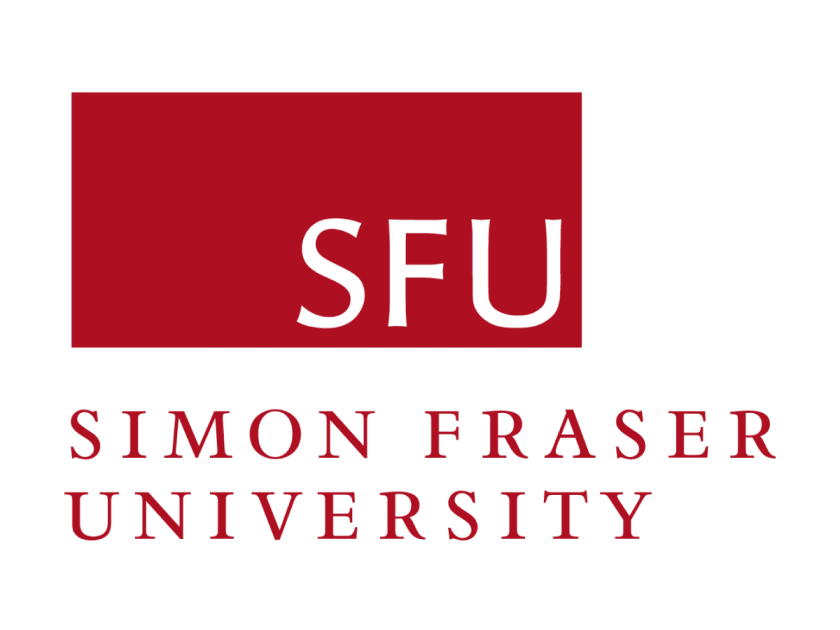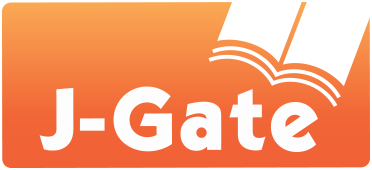English as Medium Instruction (EMI) and Educational Inequality: Perspectives of Students and Teachers at Tertiary Level in Bangladesh
DOI:
https://doi.org/10.54855/ijte.25531Keywords:
classroom equality, educational challenges, educational system, English language practice, tertiary educationAbstract
Though English is considered one of the most prestigious languages, reliance on EMI increases educational gaps. Recent studies have shown that EMI is becoming more widespread in universities, but there is a lot we remain unaware of regarding the challenges students and teachers have when attempting to close this gap in knowledge. The purpose of the study is to investigate the perceptions of students and teachers towards educational inequality in classes. A mixed method was adopted, and a survey of 50 students and an interview with 10 teachers were conducted. This study's findings revealed students' acquaintance with educational disparity in English-led learning and teachers' challenges due to inequality among the students. These findings also suggest the need for a better teaching and learning environment by giving recommendations. This research highlights the need to build inclusive EMI classrooms through interventions and instructional practices to close achievement gaps.References
Aguilar, M. (2017). Engineering lecturers’ views on CLIL and EMI. International Journal of Bilingual Education and Bilingualism, 20(6), 722- 735. http://doi.org/10.1080/13670050.2015.1073664
Alam, K.C.Z. (2022). English as the medium of instruction in higher education in Bangladesh: A colonial legacy for empowerment or a structure asking for decolonisation? [Master’s Thesis, BRAC University]. PQDT Open. http://hdl.handle.net/10361/17607
Alhamami, M. (2023). Inequity, inequality, and language rights in English as a medium of instruction programs. Evaluation and Program Planning, 99(C), 1-11. http://doi.org/10.1016/j.evalprogplan.2023.102297
Banu, R. & Sussex, R. (2001). English in Bangladesh after independence: Dynamics and policy and practice. In B. Moore (Ed.), Who’s Centric Now? The Present State of Post- Colonial Englishes (pp. 122-147). Oxford University Press.
Bax, S. (2010). Researching English bilingual education in Thailand, Indonesia and South Korea. Retrieved February 1, 2015, from https://www.teachingenglish.org.uk/sites/teacheng/files/publication_2_-_researching_ english_bilingual_education.pdf
Bourdieu, P. (1974). The school as a conservative force: Scholastic and cultural inequalities. In Eggleston, J. (Ed.), Contemporary Research in the Sociology of Education (pp. 32-46). Methuen.
Cickovska, E. (2015). The importance of learning foreign languages in the higher education of entrepreneurs. Faculty of Business Economics and Entrepreneurship, EEE(2015), 219-233. https://www.researchgate.net/publication/318365756
Cooper, R. L. (1989). Language Planning and Social Change. Cambridge University Press.
Creswell, J. W. & Clark, V. L. P. (2007). Designing and conducting mixed methods research. Sage.
Dafouz, E. & Gray, J. (2022). Rethinking the roles of ELT in English-medium education in multilingual university settings: An introduction. ELT Journal, 76(2). 163-171. https://doi.org/10.1093/elt/ccab096
Erling, E. J., Hamid, M. O., & Seargeant, P. (2013). Grassroots attitudes to English as a language for international development in Bangladesh. In Erling, E. J. & Seargeant, P. (Eds.), English and development: Policy and pedagogy (pp.88-110). https://doi.org/10.21832/9781847699473%E2%80%91008
Fang, F. & Hu, G. (2022). English medium instruction, identity construction, and negotiation of Teochew-speaking learners of English. Journal of Multilingual and Multicultural Development. Advance Online Publication. https://doi.org/10.1080/01434632.2022.2051711
Ferguson, G. (2006). Language planning and education. Edinburgh University Press.
Floris, F. D. (2014). Learning subject matter through English as the medium of instruction: Students’ and teachers’ perspectives. Asian Englishes, 16(1), 47-59. http://doi.org/10.1080/13488678.2014.884879
Hanh, N. T. H., Ngoc, H. T. Duyen, D. T. M. & Thuong, P. T. T. (2024). Factors affecting learner autonomy in EMI studying of English-major students at some economics universities in Hanoi, Vietnam. International Journal of Language Instruction, 3(3), 36- 53. https://doi.org/10.54855/ijli.24333
Hamid, M. O. (2006). English teachers’ choice of language for publication: Qualitative insights from Bangladesh. Current Issues in Language Planning, 7(1), 126–140. http://doi.org/10.2167/cilp090.0
Hamid, M. O. (2011). Planning for failure: English and language policy and planning in Bangladesh. In J. A. Fishman & O. Gracía (Eds.), Handbook of language and ethnic identity: The success-failure continuum in language and ethnic identity efforts (Volume 2) (pp. 192-203). Oxford University Press.
Hamid, M. O., Nguyen, H. T. M., & Baldauf, R. B. (2013). Medium of instruction in Asia: Context, processes and outcomes. Current Issues in Language Planning, 14(1), 1–15. http://doi.org/10.1080/14664208.2013.792130
Hamid, O & Amin, A. M. (2022). English as a medium instruction in Bangladeshi higher education: A policy perspective. In Mckinley, J. & Galloway, N. (Eds), English Medium Instruction Practices in Higher Education: International Perspectives. (pp. 1-16). Routledge.
Hamid, M, O. & Jahan, I. (2015). Language, identity, and social divides: Medium of instruction debates in Bangladeshi print media. Comparative Education Review, 59(1), 75-101. http://doi.org/10.1086/679192
Haque, S. (2019). An exploratory study of English teaching and learning in three Alia Madrasahs of Bangladesh, [Master's Thesis, BRAC University]. PQDT Open. http://hdl.handle.net/10361/13669
Hasan, M. K. (2022). A critical investigation of the status of English at the tertiary level education in Bangladesh. MEXTESOL Journal, 46(3). http://doi.org/10.61871/mj.v46n3-15
Hu, G. & Duan, Y. (2019). Questioning and responding in the classroom: A cross-disciplinary study of the effects of instructional mediums in academic subjects at a Chinese university. International Journal of Bilingual Education and Bilingualism, 22(3), 303–321. https://doi.org/10.1080/13670050.2018.1493084
Kader, M. A. & Salam, M. A. (2018). A comprehensive study on service quality and satisfaction level to the English medium education system in Bangladesh. International Journal of Contemporary Research and Review, 9(7), 20850- 20866. http://doi.org/10.15520/ijcrr/2018/9/07/541
Kaplan, R. B.; Baldauf, R. B. (1997). Language planning from practice to theory. Multilingual Matters.
Kym, I. & Kym, M. H. (2014). Students’ perceptions of EMI in higher education in Korea. The Journal of Asia TEFL, 11(2), 35-61.
Marcjanik, M. (2023). EMI in higher education: Current challenges. Anglica An International Journal of English Studies, 32(2), 137-155. http://doi.org/10.7311/0860-5734.32.2.07
Nashruddin, W. (2015). Teaching English as a foreign language at madrasah ibtidaiyyah: Facts and challenges. Dinamika Ilmu, 15(1), 67-84. http://doi.org/10.21093/di.v15i1.94
Pecorari, D. & H. Malmström. (2018). At the crossroads of TESOL and English medium instruction. TESOL Quarterly, 52(3), 497–515. https://doi.org/10.1002/tesq.470
Phuong, H. Y. & Nguyen, T. T. (2019). Students’ perceptions towards the benefits and drawbacks of EMI classes. English Language Teaching, 12(5), 88-100. http://doi.org/10.5539/elt.v12n5p88
Rao, N. & Hossain, M. I. (2011). Confronting poverty and educational inequalities: Madrasas as a strategy for contesting dominant literacy in rural Bangladesh. International Journal of Educational Development, 31(6), 623-633. https://doi.org/10.1016/j.ijedudev.2011.01.012
Ricento, T. (2015). Introduction. In T. Ricento (Ed.), Language Policy and Political Economy: English in a Global Context (pp. 1–24). Oxford University Press.
Richards, J. & Pun, J. (2022). Teaching and learning in medium English instruction. Routledge. http://doi.org/10.4324/9781003191445
Rose, H., Curle, S., Aizawa, I. & Thompson, G. (2019). What drives success in English medium-taught courses? The interplay between language proficiency, academic skills, and motivation. Studies in Higher Education, 45(1). 2149–2161. http://doi.org/10.1080/03075079.2019.1590690
Roy, R. K. (2024, June 3). English medium schools are increasingly getting popular. The Daily Sun. https://www.daily-sun.com/post/751350
Rusch, E. & Perry, E. (1999). Resistance to change: An alternative story. International Journal of Educational Reform, 8(3), 285-300.
Sah, P. K. & G. Li. (2018). English medium instruction (EMI) as linguistic capital: Promises and realities. International Multilingual Research Journal, 12(2): 109–123. http://doi.org/10.1080/19313152.2017.1401448.
Sah, P.K. & Karki, J. (2020). Elite appropriation of English as a medium of instruction policy and epistemic inequalities in Himalayan schools. Journal of Multilingual and Multicultural Development, 44(1), 20-34. https://doi.org/10.1080/01434632.2020.1789154
Sherwani, S. H. T. (2017). Teachers’ Perspectives of the use of CLT in ELT classrooms: A case of Soran district of Northern Iraq. Arab World English Journal (AWEJ), 8(3), 191-206. https://dx.doi.org/10.24093/awej/vol8no3.13
Simbolon, N. E., Oliver, R. & Mercieca, P. (2020). Lecturers’ perceptions of English medium instruction (EMI) practice at a university in Indonesia. Pertanika Journal of Social Sciences & Humanities, 28 (2), 1065 – 1081.
Smith, M. C., Elle, F. Grudnoff, L., Haigh, M., Hill, M. & Ludlow, L. (2016). Initial teacher education: What does it take to put equity at the center? Teaching and Teacher Education, 57, 67-78. http://doi.org/10.1016/j.tate.2016.03.006
Sofyana, U. & Pahamzah, J. (2022). Social Class and EFL Learning in Indonesia: Listening to Teachers’ Perception. JELTS, 5(1), 91-101. http://dx.doi.org/10.48181/jelts.v5i1.16182
Sullivan, A. (2016). Bourdieu and education: How useful is Bourdieu's theory for researchers? The Netherlands Journal of Social Sciences, 38(2), 144-166.
Tam, D. T. M. & Chi, N. T. M. (2024). Impacts of EMI courses on English language proficiency: Students’ voices. International Journal of Language Instruction, 3(4), 143-159. https://doi.org/10.54855/ijli.24348
Thorpe, A., Snell, M., Davey‐Evans, S., & Talman, R. (2017). Improving the academic performance of non‐native English‐speaking students: The contribution of pre‐sessional English language programmes. Higher Education Quarterly, 71(1), 5–32. https://doi.org/10.1111/hequ.12109
Tran, L. & Nguyen, H. T. (2018). Internationalisation of higher education in Vietnam through English medium instruction (EMI): Practices, tensions and implications for local language policy. In I. Liyanage (Ed.), Multilingual Education Yearbook (pp. 92-106). https://doi.org/10.1007/978-3-319-77655-2_6
Vietnam International Education Department. (2016). List of approved joint education programs. Retrieved from https://vied.vn/imgs/2016/09/LKDT/LKDT_1.9.2016.pdf.
Yuan, L., Fang, F. & Hu, G. (2024). Are students prepared and supported for English medium instruction in Chinese higher education to promote educational equality? System, 125(2024), 1-11. https://doi.org/10.1016/j.system.2024.103423
Zacharias, N. T. (2013). Navigating through the English-medium-of-instruction policy: Voices from the field. Current Issues in Language Planning, 14(1), 1-16. http://doi.org/10.1080/14664208.2013.782797
Downloads
Published
Issue
Section
License
Copyright (c) 2025 Nushrat Mahjabeen

This work is licensed under a Creative Commons Attribution 4.0 International License.
The copyright of all articles published in the International Journal of TESOL & Education (ijte) remains with the Authors, i.e. Authors retain full ownership of their article. Permitted third-party reuse of the open access articles is defined by the applicable Creative Commons (CC) end-user license which is accepted by the Authors upon submission of their paper. All articles in the ijte are published under the CC BY-NC 4.0 license, meaning that end users can freely share an article (i.e. copy and redistribute the material in any medium or format) and adapt it (i.e. remix, transform and build upon the material) on the condition that proper attribution is given (i.e. appropriate credit, a link to the applicable license and an indication if any changes were made; all in such a way that does not suggest that the licensor endorses the user or the use) and the material is only used for non-commercial purposes.
Authors retain copyright and grant the journal the right of first publication with the work simultaneously licensed under a Creative Commons Attribution 4.0 International License that allows others to share the work with an acknowledgment of the work's authorship and initial publication in this journal.
Authors are able to enter into separate, additional contractual arrangements for the non-exclusive distribution of the journal's published version of the work (e.g., post it to an institutional repository, in a journal or publish it in a book), with an acknowledgment of its initial publication in this journal.











